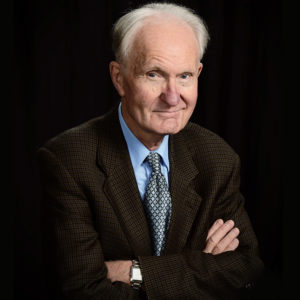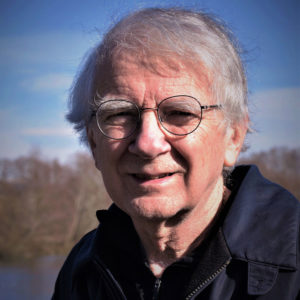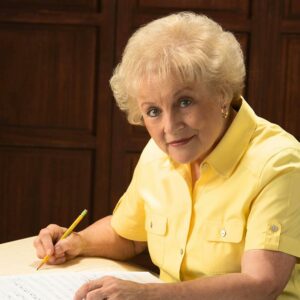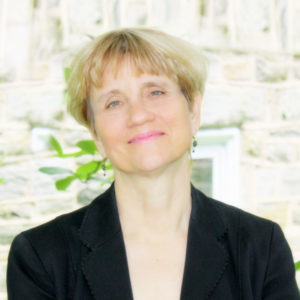In the Company of Music
Melissa D’Albora composer
Allen Brings composer
Christopher Jessup composer
Anthony Paul De Ritis composer
Richard E Brown composer
Mark G. Simon composer
Deon Nielsen Price composer
Heidi Jacob composer
Lindsey Goodman flute
Clare Longendyke piano
“Masterful music invites performers to accept and rise to all challenges,” says flutist Lindsey Goodman, who along with pianist Clare Longendyke brings an exhilarating cross section of contemporary chamber works to life on IN THE COMPANY OF MUSIC. From evocative miniatures to pensive, multi-movement works, this Navona Records release showcases the breadth of compositional styles in which the flute can shine, exploring traditional expressions, the avant garde, and everywhere in between. These pieces are remarkably diverse, and so are the inspirations behind them — from major events in human history to pure musical curiosity and more.
Listen
Stream/Buy
Choose your platform
Track Listing & Credits
| # | Title | Composer | Performer | |
|---|---|---|---|---|
| 01 | Lava | Melissa D'Albora | Lindsey Goodman, flute | 6:35 |
| 02 | Cadenza 2 | Allen Brings | Lindsey Goodman, flute | 4:56 |
| 03 | Phases, III. Dampening | Christopher Jessup | Lindsey Goodman, flute | 3:04 |
| 04 | ...no such thing as an empty space | Anthony Paul De Ritis | Lindsey Goodman, flute | 4:36 |
| 05 | Soliloquy and Rondo | Richard E Brown | Lindsey Goodman, flute; Clare Longendyke, piano | 9:20 |
| 06 | Voice of the Turtle | Mark G. Simon | Lindsey Goodman, flute; Clare Longendyke, piano | 12:24 |
| 07 | War Ends; Song Endures | Deon Nielsen Price | Lindsey Goodman, flute; Clare Longendyke, piano | 6:27 |
| 08 | Suite for Flute and Piano: I. Preludio | Heidi Jacob | Lindsey Goodman, flute; Clare Longendyke, piano | 3:05 |
| 09 | Suite for Flute and Piano: II. Scherzo | Heidi Jacob | Lindsey Goodman, flute; Clare Longendyke, piano | 2:57 |
| 10 | Suite for Flute and Piano: III. Intermezzo | Heidi Jacob | Lindsey Goodman, flute; Clare Longendyke, piano | 4:25 |
| 11 | Suite for Flute and Piano: IV. Rondino | Heidi Jacob | Lindsey Goodman, flute; Clare Longendyke, piano | 3:14 |
Recorded February 15-19, 2024 at Fraser Performance Studio, WGBH in Boston MA
Session Producer Brad Michel
Engineer Antonio Oliart
Assistant Engineer Téa Mottolese
Editing, Mixing & Mastering Brad Michel
Executive Producer Bob Lord
VP of A&R Brandon MacNeil
A&R Danielle Sullivan, Chris Robinson
VP of Production Jan Košulič
Audio Director Lucas Paquette
Production Manager Martina Watzková
Production Assistant Adam Lysák
VP, Design & Marketing Brett Picknell
Art Director Ryan Harrison
Design Edward A. Fleming
Publicity Chelsea Kornago
Digital Marketing Manager Brett Iannucci
Artist Information

Melissa D’Albora
Melissa D’Albora’s music addresses mental health and political discourse, ranging from gun violence to women’s rights. Respire (2020) for flute and guitar is a reflection searching for inner peace. The piece received the Andrew W. Mellon Foundation grant and was premiered by Duo Sequenza in 2021. A Fantasy (2019), commissioned by GRAMMY®-Award winning Seraphic Fire, addresses the expectations women face in society. South Florida Classical described her work as “an exploration of spatial harmonics that evidenced a sure command of writing for the voice.” D’albora’s works have been performed throughout North America by community ensembles like the East Central Indiana Community Orchestra and professional artists like Claire Grellier and Seraphic Fire.

Allen Brings
A native of New York City, Allen Brings received a Bachelor of Arts degree magna cum laude from Queens College and a Master of Arts degree from Columbia University, where he was a Mosenthal Fellow and a student of Otto Luening, and a doctorate in theory and composition from Boston University, where he was a teaching fellow and a student of Gardner Read.

Christopher Jessup
Christopher Jessup is a multi award-winning composer and pianist whose music has been hailed as “lovely” [The New York Times], “imaginative” [Fanfare], and “ethereal” [Textura]. Highly regarded as both a composer and performer, Jessup is one of the foremost musicians of his generation.

Anthony Paul De Ritis
Described as an “eclectic whose works draw on popular and electronic music” (Wall Street Journal), and a “genuinely American composer” (Gramophone), Anthony Paul De Ritis has received performances around the world including at the Weill Recital Hall at Carnegie Hall, Le Poisson Rouge, Lincoln Center, Beijing’s Yugong Yishan, Seoul’s KT Art Hall, the Italian Pavilion at the World Expo in Milan, and UNESCO headquarters in Paris.

Richard E Brown
Richard E Brown, a native of New York State and has been active as a composer-arranger and music educator for many years. His training includes M.M. and D.M. degrees in composition from Florida State University, as well as a B.A. in music education from Central College, which named him a Distinguished Alumnus in 1983. His principal composition studies were with Carlisle Floyd, John Boda, and Charles Carter. He is a member of ASCAP and is represented in the catalogs of several trade publishers, as well as his personal imprint Dacker Music.

Mark G. Simon
Mark G. Simon is an accomplished American composer and clarinetist. He holds a D.M.A. in composition from Cornell University, where he studied with Karel Husa, Steven Stuckey, and Robert Palmer. His compositions include orchestral, chamber, and vocal works, many featuring the clarinet. His musical Jennie’s Will was commissioned for the bicentennial of the Village of Dryden NY. The Carnival of the Subatomic Particles, a 13-movement exploration of particle physics for chamber ensemble and narrator set to a poem by Cornell physicist N. David Mermin, was commissioned and premiered by Music’s Recreation in Ithaca NY.

Deon Nielsen Price
The deep humanitarian concerns that permeate much of Dr. Deon Nielsen Price’s music is represented in her duo War Ends-Song Endures, a tribute to the valiant spirit of Ukrainians, premiered in 2023 at the Mu Phi Epsilon International Convention in Texas by flutist Rik Noyce and commissioning pianist Mary Au. Named the "Tom Brady of Composers" (New York Times 12/24/2022), Price feels honored to represent octogenarian composers who are still professionally active. She was a Winner of The 2023 American Prize in orchestra for her Chamber Symphony as well as a finalist for The 2023 American Prize in vocal chamber music for her song cycle Ludwig’s Letter to Eternal Beloved, and, in opera/theater, for her chamber opera, Ammon and the King, Immigrant Speaks Truth to Power. Her Oratorio CHRISTUS was premiered and recorded in the Salt Lake Tabernacle in June 2023.

Heidi Jacob
Heidi Jacob’s music has been described by BBC Magazine as “compositions …of complex mesmerizing beauty,” and by Gramophone Magazine as music with “…forthright expressiveness [that] exposes a multitude of stylistic associations.” Praise for her recent recording on Navona Records of Lilacs with the Kühn Choir of Prague include: “the music is simply breathtaking,” (Nicholas Wright) “…Jacob writes music of imagination and adventure…voices interweave hauntingly… ascending to towering heights,” (Textura), and “Heidi Jacob’s Lilacs opens with Kristýna Fílová’s soaring soprano… Amina Robinson’s narration amid the sublime choral harmonizing.” (Take Effect)

Lindsey Goodman
Flutist Lindsey Goodman is a soloist, recording artist, chamber collaborator, orchestral musician, educator, and clinician whose “palette of tone colors includes cool silver, warm chocolate, the bright colors of a sunrise, and the deep blue of midnight” (The Flutist Quarterly). Renowned for her “energy and artistry, conveying her exuberance and creativity” (Pittsburgh in the Round), Goodman has performed solo and chamber concerts, taught masterclasses, and given presentations at countless series, festivals, and universities. Performances “played with conviction” (New York Times) have been heard across three continents, including at Carnegie Hall, Eastman School of Music, Edinburgh Festival Fringe, Oberlin Conservatory of Music, Google headquarters, University of Cincinnati College–Conservatory of Music, several National and Canadian Flute Association conventions, across China, and on the Nobody Listens to Paula Poundstone podcast.

Clare Longendyke
A pianist with “an artistic ferocity that captivated and astonished listeners” (Waverly Newspapers), Clare Longendyke is a soloist, chamber musician, and musical innovator who performs with American orchestras and on recital series around the world. Recent highlights include performances with orchestras in Minnesota, Iowa, Indiana, and Virginia, and the release of her debut solo CD in 2024, …of dreams unveiled, featuring works of Claude Debussy, Amy Williams, and Anthony R. Green. The album debuted at No. 2 on the Traditional Classical Billboard Chart and was praised as “a work of remarkable pianistic invention” (The WholeNote), “delightfully daring,” and “a CD that should not be missed” (EarRelevant).
Notes
Videos
Christopher Jessup – Phases: III. Dampening from ‘IN THE COMPANY OF MUSIC’



